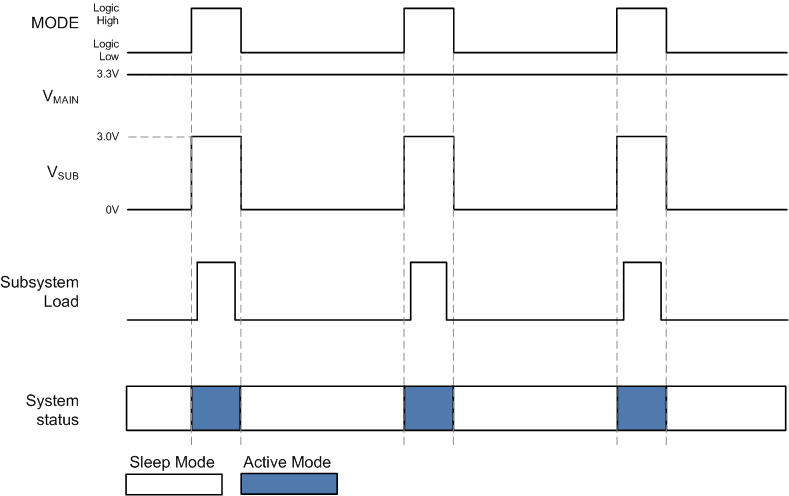JAJSL22F June 2015 – September 2021 TPS61098 , TPS610981 , TPS610982 , TPS610985 , TPS610986 , TPS610987
PRODUCTION DATA
- 1 特長
- 2 アプリケーション
- 3 概要
- 4 Revision History
- 5 Device Comparison Table
- 6 Pin Configuration and Functions
- 7 Specifications
- 8 Detailed Description
- 9 Applications and Implementation
- 10Power Supply Recommendations
- 11Layout
- 12Device and Documentation Support
- 13Mechanical, Packaging, and Orderable Information
9.2.1.2.5 Control Sequence
In this example, the MCU is powered by the boost output V(MAIN) and the subsystem is powered by the LDO V(SUB). MCU controls both of the TPS610981 and subsystem. The control sequence as shown in Figure 9-2 is recommended.
 Figure 9-2 System Control Sequence
Figure 9-2 System Control SequenceWhen the system is waking up, the MCU wakes up itself first, and it then pulls the MODE pin of TPS610981 to high to turned on the V(SUB) rail. TPS610981 enters into Active mode and gets ready to provide power to the subsystem. Then the MCU enables the subsystem.
When the system is entering into sleep mode, the MCU disables the subsystem first and then pulls the MODE pin to low to turn off the V(SUB), so the subsystem is disconnected from the supply to minimize the current drain. TPS610981 enters into Low Power mode and the VMAIN rail still powers the MCU with only 300 nA quiescent current. The MCU enters into sleep mode itself finally.